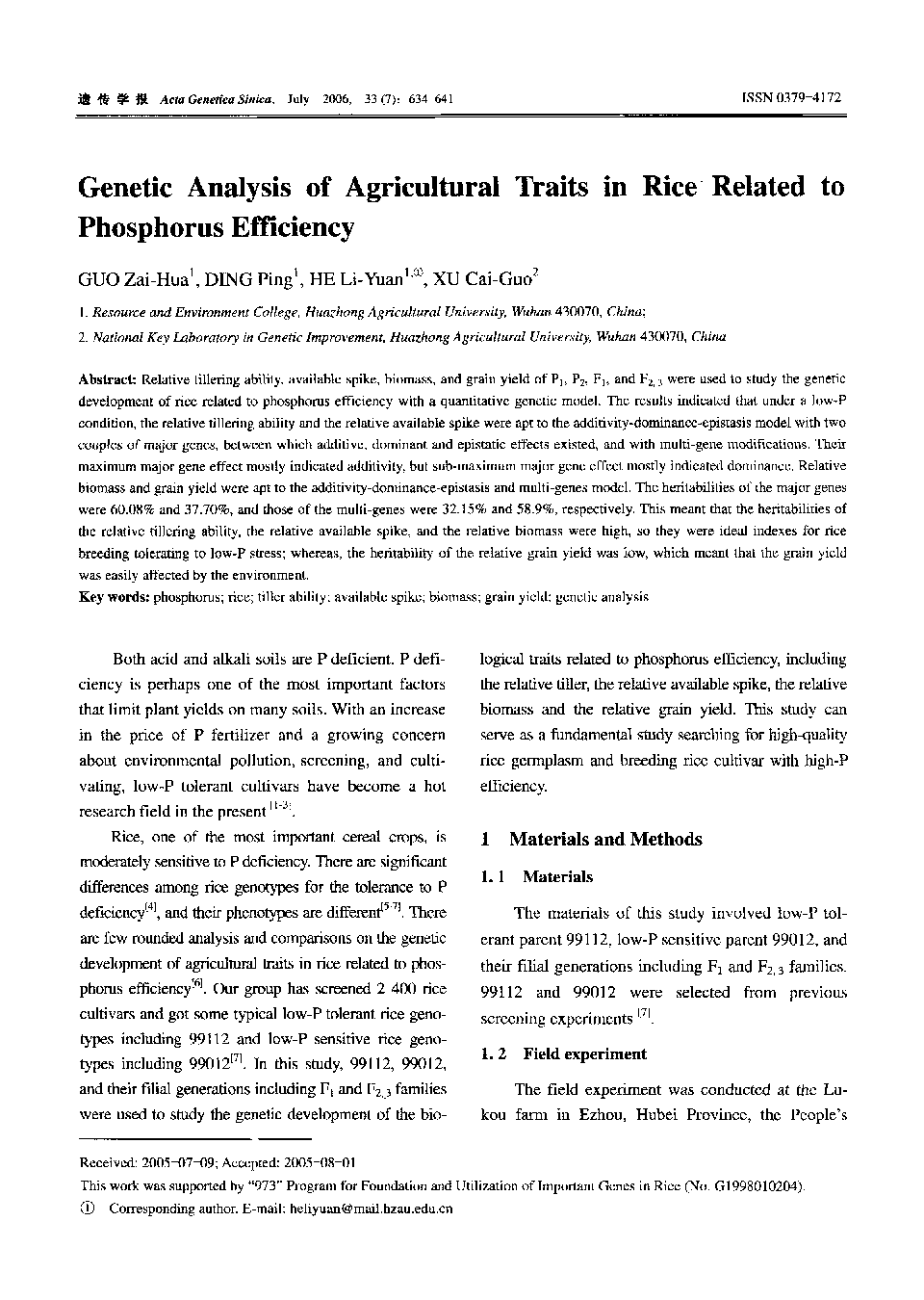| Article ID | Journal | Published Year | Pages | File Type |
|---|---|---|---|---|
| 2811326 | Acta Genetica Sinica | 2006 | 8 Pages |
Relative tillering ability, available spike, biomass, and grain yield of P1, P2, F1 and F2,3 were used to study the genetic development of rice related to phosphorus efficiency with a quantitative genetic model. The results indicated that under a low-P condition, the relative tillering ability and the relative available spike were apt to the additivity-dominance-epistasis model with two couples of major genes, between which additive, dominant and epistatic effects existed, and with multi-gene modifications. Their maximum major gene effect mostly indicated additivity, but sub-maximum major gene effect mostly indicated dominance. Relative biomass and grain yield were apt to the additivity-dominance-epistasis and multi-genes model. The heritabilities of the major genes were 60.08% and 37.70%, and those of the multi-genes were 32.15% and 58.9%, respectively. This meant that the heritabilities of the relative tillering ability, the relative available spike, and the relative biomass were high, so they were ideal indexes for rice breeding tolerating to low-P stress; whereas, the heritability of the relative grain yield was low, which meant that the grain yield was easily affected by the environment.
